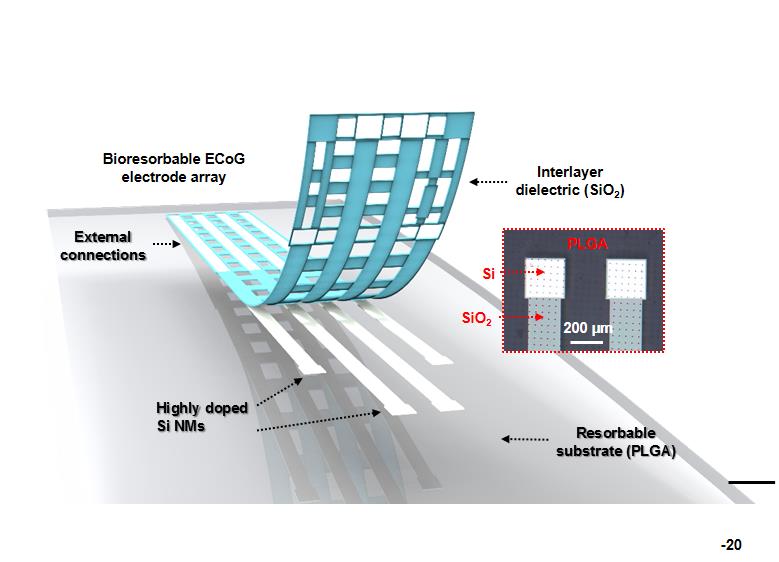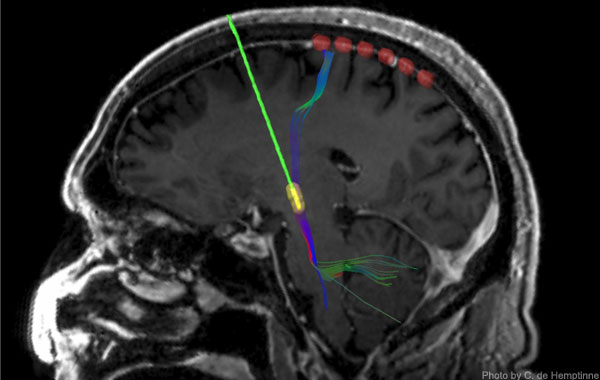Search results for: “parkinson's”
-

Algorithm detects depression in speech
USC researchers are using machine learning to diagnose depression, based on speech patterns. During interviews, SimSensei detected reductions in vowel expression that might be missed by human interviewers. The depression-associated speech variations have been documented in past studies. Depressed patient speech can be flat, with reduced variability, and monotonicity. Reduced speech, reduced articulation rate, increased pause duration,…
-

Self-dissolving brain monitoring electrodes
University of Pennsylvania researchers are developing implantable, brain monitoring electrodes that dissolve at a predetermined rate. The DARPA funded device could provide continuous data used to monitor or treat Parkinson’s disease, depression and chronic pain. As it is absorbed into the body, the risk associated with removal is eliminated. ApplySci recently described a related self…
-

Ultrasound penetrates blood-brain barrier to treat brain tumor
Todd Mainprize at Sunnybrook Hospital has, for the first time, delivered chemotherapy directly to a brain tumor, by breaking through the blood-brain barrier using tightly focused ultrasound. The patient’s bloodstream was infused with a chemotherapy drug, as well as microscopic bubbles, which are smaller than red blood cells and can pass freely through blood. MRI-guided, low intensity sound…
-

Implant captures neural signals, leaves surrounding tissue intact
Lund professor Jens Schouenborg has developed implantable multichannel electrodes that can capture signals from single neurons over a long period — without causing brain tissue damage. While not yet tested on humans, Schouenborg believes that the discovery will make it possible to understand brain function in both healthy and diseased individuals. Potential applications include Parkinson’s and chronic…
-

Digital pen/machine learning based neurodegenerative disease diagnosis
MIT researchers have developed a digital assessment tool based on the Anoto Live Pen that they believe will improve the accuracy of Alzheimer’s and Parkinson’s Disease diagnosis. A paper demonstrates a machine learning based predictive model that might detect neurodegenerative diseases earlier than current methods. According to lead author William Souillard-Mandar, the technology “allows us to extract…
-

Study: DBS reshapes neural circuits
UCSF professor Philip Starr published a paper suggesting that Deep Brain Stimulation works by reducing overly synchronized motor cortex activity. He believes that this explains why surgically implanted electrodes improve movement, tremor, and rigidity in Parkinson’s patients. Little is known about why and how DBS works. This has held back efforts to improve the therapy.…
-

Google files patent for cancer targeting wearable
Following its patent application for a pill that “paints” cancer cells for scanner detection, Google has filed a new patent for a wearable to detect and destroy the painted cells. It describes a Calico developed device that “can automatically modify or destroy one or more targets in the blood that have an adverse health effect”. These could…
-

Patch monitors muscle activity, dispenses medicine
Kim Dae-Hyeong and colleagues at Seoul National University have created a dermal patch that measures and records muscle activity, dispenses medicine continuously, and stops drug delivery when appropriate. The study was published in Nature Nanotechnology today. The system is ideal for Parkinson’s patients, as tremors that accompany the movement disorder are not constant. The patch senses tremors early…
-

Nobel-worthy stem cell discovery
http://www.nature.com/news/acid-bath-offers-easy-path-to-stem-cells-1.14600 Haruko Obokata and colleagues at the RIKEN Center for Developmental Biology have created embryonic stem cells from a single blood cell by putting white blood cells from a baby mouse in a mild acid solution. Eventually a few stem cells emerge that can turn into any other cell in the body including skin, heart, liver or neurons.…